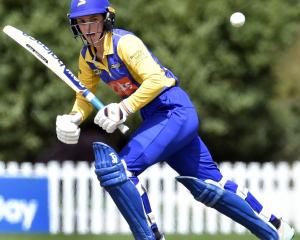You might describe Ross Dykes' push to have part of the former Dunedin Art Gallery demolished as a patient and diligent innings.
Certainly the Otago Cricket Association chief executive has had to dig in and bide his time while the Dunedin City Council worked out how best to get on the front foot.
But the four-year wait appears to have been worth it for Dykes with the DCC yesterday announcing it would apply for resource consent to remove a further three bays from the building situated at the northern end of the University Oval.
If the demolition goes ahead, Otago cricket will be able to lengthen the oval's shortest boundary from 52m to 62m and increase the crowd capacity from about 3000 to 6500.
The DCC hopes to have the go-ahead by August and, with the New Zealand Historic Places Trust (NZHPL) supportive of the planned modifications, it should be just a matter of time before hitting a six at the ground will take a bit more effort.
"We are no longer going to have Daniel Vettori telling us he can't play slow bowlers here because the boundaries are too short," Dykes said.
"We're very thrilled. It has been a long time but these things do take time - like the cheese man said.
"This has been the culmination of a lot of effort from a lot of people and I'd be remiss if I didn't thank the council for the effort they have put into this.
"They've got a result which is good for cricket."
While the DCC and NZHPT are now singing from the same hymn book, if you wind the clock back four years there was discord rather than harmony.
The former gallery is believed to be the only surviving in-situ building from any of the South Seas Exhibitions held in New Zealand and was purpose-built for the 1925 event.
Despite the building's historical significance, part of the building was removed in 2001.
But when the DCC recommended the building's removal in June 2006, the Historic Places Trust vowed to fight its demolition in the Environment Court.
However, a compromise has been reached in which most of the original building will be preserved.
Work has already started on the pitch block, which will be expanded from five to eight strips and re-layed with superior Kakanui clay.
The media centre will be relocated and the ground's drainage system upgraded.
Dykes said the venue would be out of commission for the majority of next summer, with work expected to finish in mid-to-late February and the possibility of a first-class game in late March.
Dykes is hopeful the expansion will help the venue to be allocated regular tests and attract higher calibre opposition.
He believes the ground's dimensions have held the venue back, with New Zealand Cricket reluctant to scheduled tests against the likes of Australia, South Africa or England.
But there is price for development and Dykes would not like to see the "boutique venue" lose its unique character by trying to be something it is not.
He shudders at the thought of turning the tree-lined ground into a concrete jungle with lights and seating for a crowd of more than 10,000.
"In my opinion it would be a great shame ... and I suspect we'd lose the beauty and the ambience of the ground."








